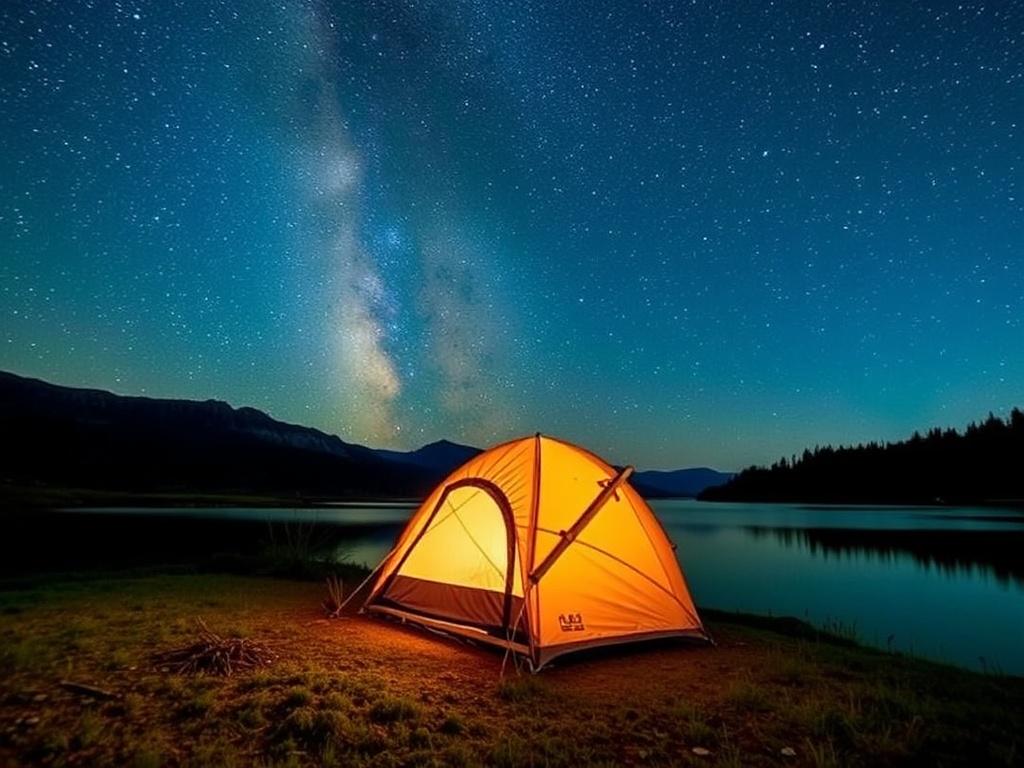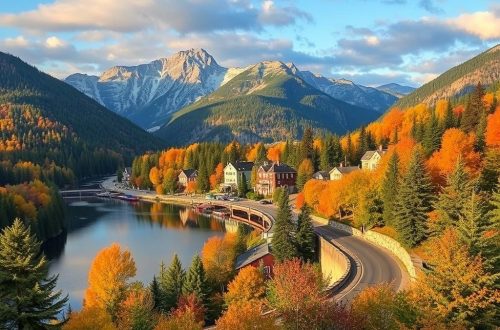
Best Destinations for Stargazing: Exploring the Night Sky’s Finest Views
Stargazing is one of those timeless activities that connects us deeply with the universe around us. Whether you’re an amateur astronomer eager to catch the dazzling sight of a meteor shower or a casual night sky observer marveling at the Milky Way, finding the best destinations for stargazing can elevate your experience to a whole new level. In today’s world, light pollution from cities makes it increasingly challenging to see the stars clearly, which is why traveling to the right places becomes essential for the perfect nighttime sky. This article dives into some truly spectacular locations that offer pristine views of the cosmos and guides you on everything you need to know for your next stargazing adventure.
Why Choosing the Best Destinations for Stargazing Matters
When it comes to stargazing, location is everything. Light pollution, altitude, climate, and atmospheric clarity all play crucial roles in how clear and bright the night sky appears. Sadly, most urban areas suffer from excessive light pollution, making it hard to spot even the brightest constellations. The best destinations for stargazing have minimal artificial lighting, often found in remote areas, parks, or desert regions where dry air and high altitudes enhance visibility.
Besides clear skies, these destinations often offer additional amenities like observatories, guided night tours, and accessibility to telescopes, enriching the stargazing experience. Traveling to a renowned stargazing site also means you get to appreciate the natural beauty surrounding you by day, combining adventure and relaxation with your pursuit of the stars.
Factors That Define the Best Stargazing Spots
Before we jump into the list, let’s look at the critical factors that make certain places stand out as the best destinations for stargazing:
- Low Light Pollution: Areas far from city lights provide the darkest skies possible.
- Altitude: Higher elevation reduces atmospheric interference, offering clearer views.
- Climate: Dry climates with low humidity help reduce haze and cloud cover.
- Accessibility: Some of the best spots are easy to reach while still being pristine.
- Additional Facilities: Observatories, camping areas, and guided astronomy tours enhance the experience.
Top 7 Best Destinations for Stargazing Around the World
Ready to embrace the night sky? Here’s a curated list of some of the top stargazing destinations that consistently receive rave reviews from astronomy lovers and travelers alike.
1. Mauna Kea, Hawaii, USA
Mauna Kea ranks among the world’s premier locations for stargazing, thanks to its exceptional altitude of 13,796 feet above sea level, low humidity, and nearly perfect atmospheric conditions. This dormant volcano on the Big Island offers some of the clearest skies you can find anywhere on Earth. Mauna Kea is home to numerous world-class observatories, making it a hub for both professional astronomers and amateur sky watchers.
Visitors can participate in sunset and stargazing tours led by experts who provide telescopes and star charts to spot planets, nebulae, and distant galaxies. The crisp air and the surreal sight of the Milky Way stretching overhead will leave you awestruck.
2. Atacama Desert, Chile
The Atacama Desert is famously one of the driest places on Earth, located in northern Chile. Its high altitude, clear air, and minimal cloud cover create an ideal environment for stargazing. The desert is so important for astronomical research that it hosts several international observatories and telescopes, including the ALMA array.
Visitors here can enjoy guided night walks, astronomy museums, and stargazing lodges equipped with telescopes. The clarity of the sky often allows you to see bright stars, planets, and even the faint glow of distant galaxies with the naked eye.
3. Jasper National Park, Alberta, Canada
Nestled in the Canadian Rockies, Jasper National Park is a designated Dark Sky Preserve, protecting its environment from light pollution. The park offers stunning mountain landscapes combined with crystal-clear night skies. During the summer, the park hosts the Jasper Dark Sky Festival with talks, workshops, and night sky observation events.
Jasper’s low humidity and high altitude, along with its remote location, provide fantastic conditions perfect for stargazing. The star-filled sky reflecting off pristine lakes like Maligne Lake makes for unforgettable sights and photographs.
4. Aoraki Mackenzie, New Zealand
The Aoraki Mackenzie region in New Zealand has earned its status as an International Dark Sky Reserve for its incredibly dark skies and minimal light pollution. This area’s rural and mountainous terrain provides unobstructed views of the southern celestial hemisphere, where you can observe the famed Southern Cross constellation.
New Zealand’s quiet nights and friendly communities make it easy to combine stargazing with other activities like hiking and cultural tours. Clear nights here often reveal millions of stars, giving you a true sense of the universe’s vastness.
5. Namib Desert, Namibia
The Namib Desert offers something truly extraordinary—vast, dark skies over rolling sand dunes. This desert is one of Africa’s oldest and most pristine landscapes, with dry air and limited light pollution that create stunning stargazing opportunities.
Visitors come here to enjoy starry nights in safari camps or eco-lodges, where expert guides help point out planets, constellations, and even the occasional shooting star. Night sky photography in the Namib Desert yields some breathtaking shots, capturing the Milky Way in all its glory.
6. Tenerife, Canary Islands, Spain
Tenerife, the largest of the Canary Islands, boasts an impressive reputation for stargazing due to its high altitude and steady airflow that keeps skies clear. The volcanic landscape and limited light pollution within Teide National Park form the perfect backdrop for night sky observation.
Mount Teide’s summit, the highest point in Spain, plays host to a research observatory where visitors can join stargazing tours at night. The island’s European charm combined with excellent parking and access makes Tenerife a favorite destination.
7. Kiruna, Swedish Lapland
For those seeking a truly unique stargazing experience up north, Kiruna in Swedish Lapland dazzles with both its incredible night sky and the chance to witness the Northern Lights. The region offers completely dark skies during long winter nights, and cold but clear air lets you see constellations and planets with remarkable clarity.
Aurora hunters, as well as star gazers, often combine their trip with activities like dog sledding or ice fishing, enhancing the adventure. The stark beauty of the Arctic wilderness makes the skies feel even more vast and inspiring.
Quick Comparison Table of the Best Destinations for Stargazing
| Destination | Country | Altitude | Best Season | Special Features |
|---|---|---|---|---|
| Mauna Kea | USA (Hawaii) | 13,796 ft (4,205 m) | Year-round, best in summer | World-class observatories; dry, clear air |
| Atacama Desert | Chile | 7,800+ ft (2,400+ m) | Year-round, especially autumn | Dryest desert; ALMA observatories |
| Jasper National Park | Canada | 4,000 ft (1,200 m) | Summer and fall | Dark Sky Preserve; cultural festivals |
| Aoraki Mackenzie | New Zealand | 1,200-3,700 ft (400-1,100 m) | Winter and summer | International Dark Sky Reserve; Southern Cross view |
| Namib Desert | Namibia | About 1,800 ft (550 m) | Dry season (May – October) | Sand dunes; safari camps |
| Tenerife | Spain (Canary Islands) | 12,200 ft (3,715 m) | Year-round, best May-September | Volcanic landscape; Teide National Park |
| Kiruna | Sweden | 1,500 ft (460 m) | Winter (December – March) | Northern Lights; Arctic wilderness |
Tips for the Ultimate Stargazing Experience
Before you pack your bags and head to one of these incredible best destinations for stargazing, here are some practical tips to make sure your night under the stars is comfortable and memorable:
- Check the Moon Phase: The darkest skies come during the new moon or when the moonlight is minimal, so plan your visit accordingly.
- Bring Proper Gear: Warm clothes, even in summer, are essential for cooler nighttime temperatures. Also, consider bringing a good quality telescope or binoculars.
- Be Patient and Quiet: Stargazing rewards patience. Allow your eyes to adjust to the dark and avoid using bright lights or phone screens.
- Use Star Maps or Apps: Many smartphone apps can help identify constellations and planets, making the experience even more engaging.
- Book Guided Tours: Local guides often know the best spots and can offer valuable insights about the night sky and astrophotography.
Why Stargazing Is Worth the Trip
There’s something profoundly humbling and inspiring about standing beneath a blanket of stars stretching across the sky. The best destinations for stargazing not only offer spectacular astronomical sights but also remind us of our place in the universe. Traveling to these locations gives you a chance to disconnect from the hustle and bustle of daily life and immerse yourself in the universe’s vast beauty.
Whether you are planning a family trip, a romantic getaway, or a solo adventure, stargazing destinations invite you to slow down, look up, and witness sights that few get the chance to see. It’s an enriching experience that combines science, nature, and wonder in equal measure.
Conclusion
Setting out to explore the best destinations for stargazing is more than just a travel plan—it’s a journey into the heart of the cosmos. From the towering volcanic peaks of Mauna Kea to the ancient dunes of Namibia’s desert, each destination offers a unique window to the universe, showcasing the stars in all their glory. By picking the right spot, planning your visit around perfect conditions, and embracing the tranquility of the night, you can create unforgettable memories and deepen your appreciation for the world beyond our own. So next time you gaze up at the sky, consider turning that gaze into an adventure that takes you far from city lights and closer to the stars.




